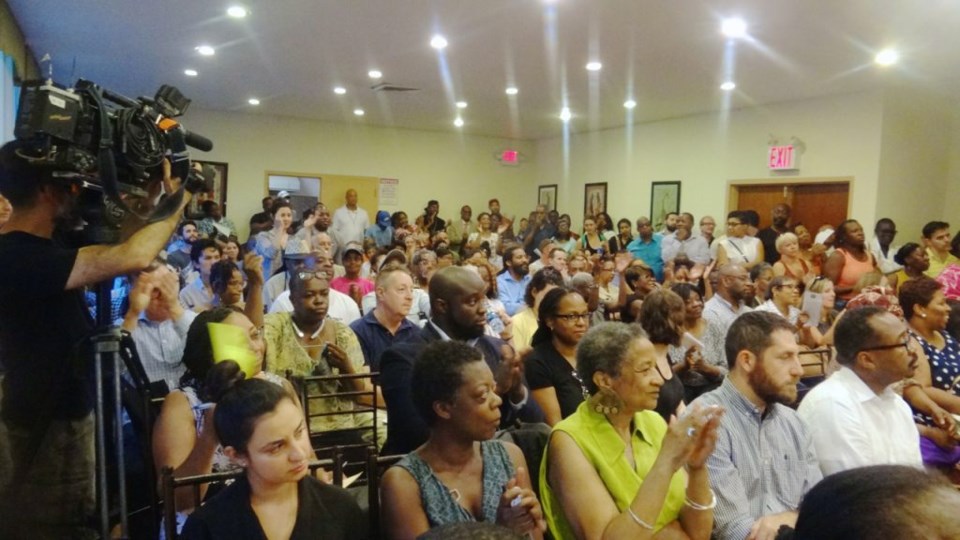
Around 200 Bed-Stuy residents, community leaders and elected officials packed into the multipurpose room at Restoration Plaza Monday night for a town hall meeting to discuss a proposal by the City to open a homeless shelter at 1217 Bedford Avenue in Bedford Stuyvesant, which would bring the total number of homeless facilities in the neighborhood to 15.
The meeting was called by City Councilmember Robert E. Cornegy, Jr. and Community Board 3, after CB3 District Manager Henry Butler received a letter from the city announcing the proposal and after a change.org petition to block the shelter opening had gathered more than 400 signatures.
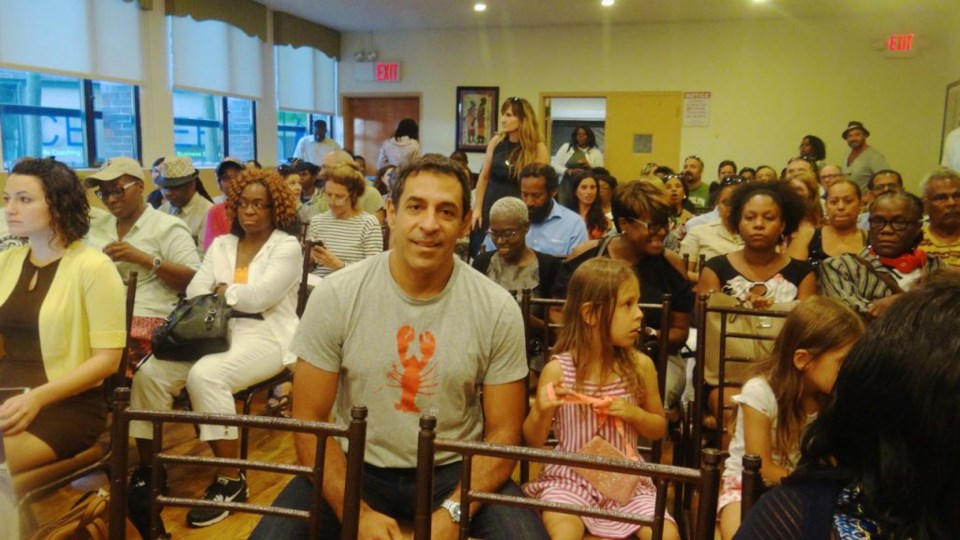
Sitting on the panel were two members of the City's Department of Homeless Services, which put out the request for proposals; three members of Breaking Ground (formerly known as Common Ground), the non-profit organization responding to the RFP; two representatives from CB3; State Sen. Velmanette Montgomery and Michael Lambert, executive director of the Bed-Stuy Gateway BID.
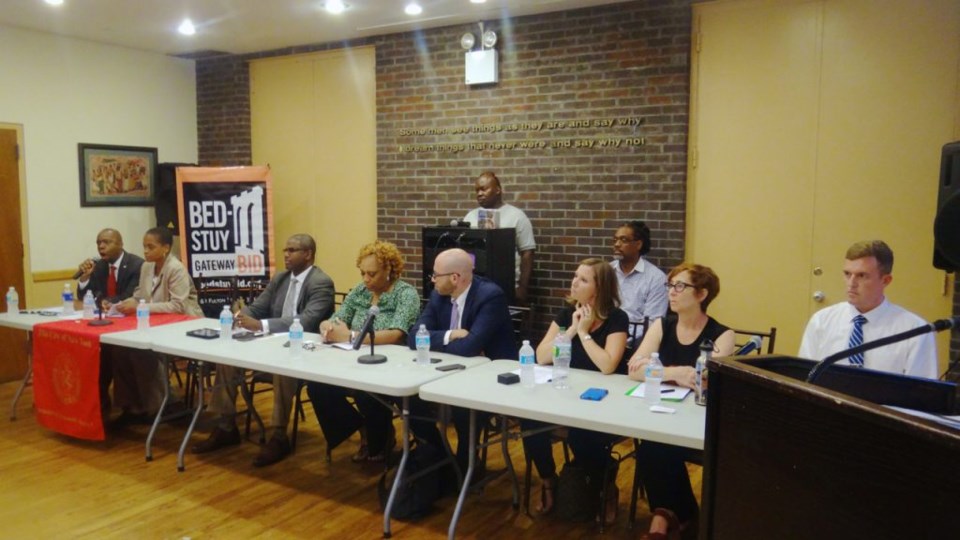
Also attending the meeting were State Assemblyman Walter Mosley and representatives from the New York City Comptroller's office and the Kings County District Attorneys office.
"I want to make clear that this conversation is not about NIMBY— not in my back yard," said Councilmember Cornegy, at the start of the meeting. "It's about equity and parity in relation to how many shelters should be in our community. It's also about [the proposed shelter's] proximity to schools and other places."
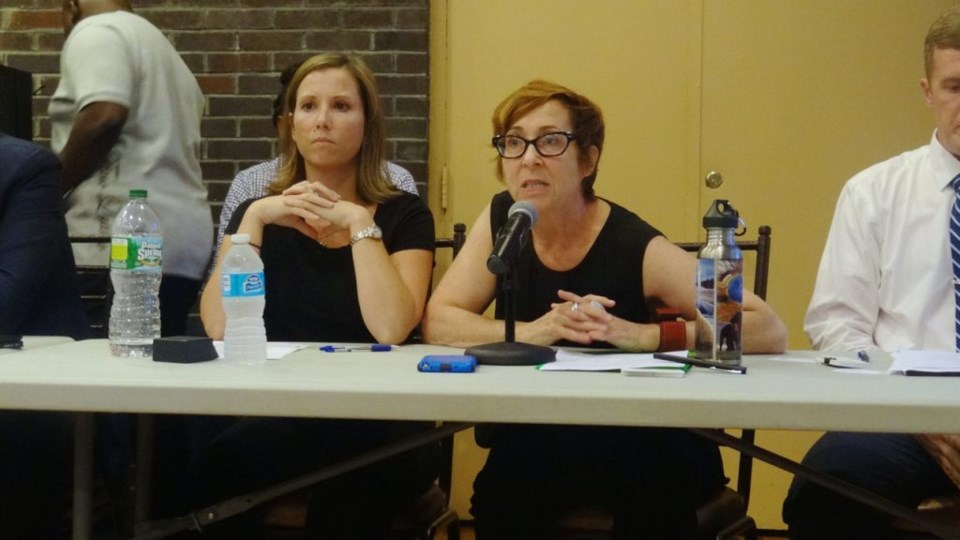
Representatives from Breaking Ground spoke first, highlighting the success the 25-year-old organization had with securing permanent residence for more than 3,000 of New York City's "street homeless"—that is, transients who chose to live on the street versus a shelter—into permanent housing. They also pointed out how the center was not considered a "shelter" per se, but instead a drop-in location for the street homeless to receive vital services, such as food and showers, mail service, case management and help accessing medical insurance and psychiatric care.
[perfectpullquote align="right" cite="" link="" color="" class="" size=""]"Why are we being used, as a dumping ground for shelters? What is the criteria for choosing a particular neighborhood?"[/perfectpullquote]
"Our staff works around the clock, going to every nook and cranny in this borough to seek out and help this population," said Claire Sheedy, vice president of housing operations and programs at Breaking Ground. "We do street outreach follow them every step of the way. We don't give up until they're into permanent housing. And I'm not talking about shelters. This is a very different type of system."
Still, residents were steadfast in their opposition, with the overwhelming majority of the town hall attendees railing against yet another shelter in Bedford-Stuyvesant, when neighboring communities, such as Cobble Hill and Park Slope had none.
Most of the residents' frustration seemed not directed at Breaking Ground, but at the City for electing Bed-Stuy as yet again the preferred location, despite the Fair Share Criteria enacted nearly two decades ago by Mayor Rudolph Giuliani that calls for the equitable distribution of "burdens and benefits" associated with city facilities across all communities.

"We are not Maspeth; this is not about NIMBY" one resident pointed out. "With already 14 shelters, we are probably the most compassionate neighborhood in the city. We are talking about the Fair Share Criteria, which is not being upheld by the city."
Another major complaint pertained to the proximity of the location to facilities that housed children: The proposed shelter site would be within blocks of, P.S. 3 and a playground where homeless men and drug paraphernalia purportedly have been spotted on several occasions.
Matthew Borden, assistant commissioner of government affairs and external relations at the Department of Homeless Services, said the City was working with the local police precinct to better patrol those areas. He also pointed out that no decision has been made yet regarding the facility and that he and his team were there to listen to residents' concerns.
And the residents gave him an earful: "What I want to know," said one resident who stood up, "is why you felt it was okay to put it in this community in the first place? Why are we being used as a dumping ground for shelters? And what exactly is the criteria for choosing a particular neighborhood?"
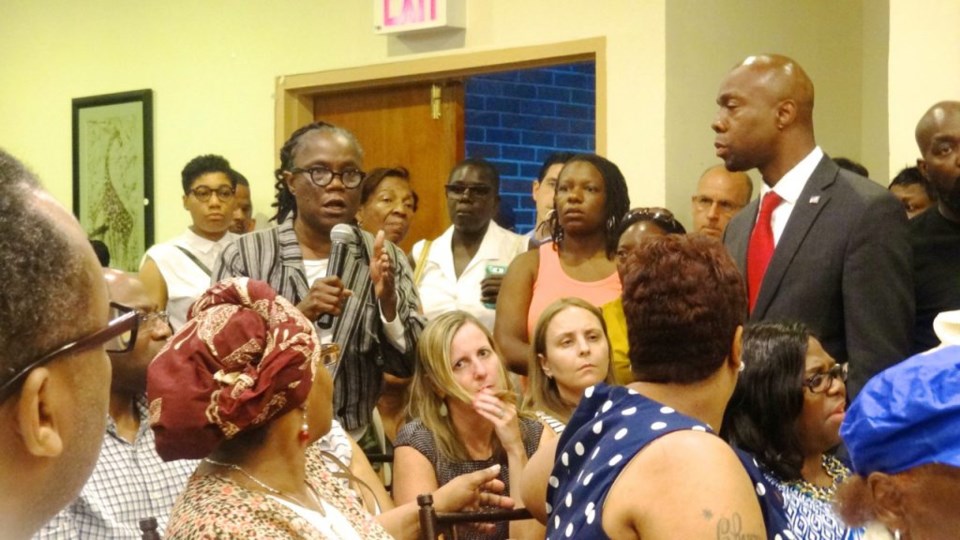
Borden said the city uses a rubric to determine locations. He could not detail the specific criteria in the rubric but said a big part of the decision was based on the homeless population in that area.
According to recent findings by the Manhattan-based Institute for Children, Poverty and Homelessness (ICPH), Bed-Stuy and its neighboring community Brownsville lead the borough in the percentages of homeless families. However, as pointed out by Breaking Ground, the population intended to be served by the drop-in center was not families but "street homeless" and transients—many of whom are men and with psychiatric and/or substance abuse problems.
In September 2015, Breaking Ground traversed the Fulton Street BID corridor—a few blocks from the proposed shelter—and said they did not, observe a homeless problem, said Lambert. "So, if it was determined that the need was not there, why is this area still under consideration?"
"Look, we're not setting out to demonize the homeless," said Lambert. "We would just like to know why Bed-Stuy?"
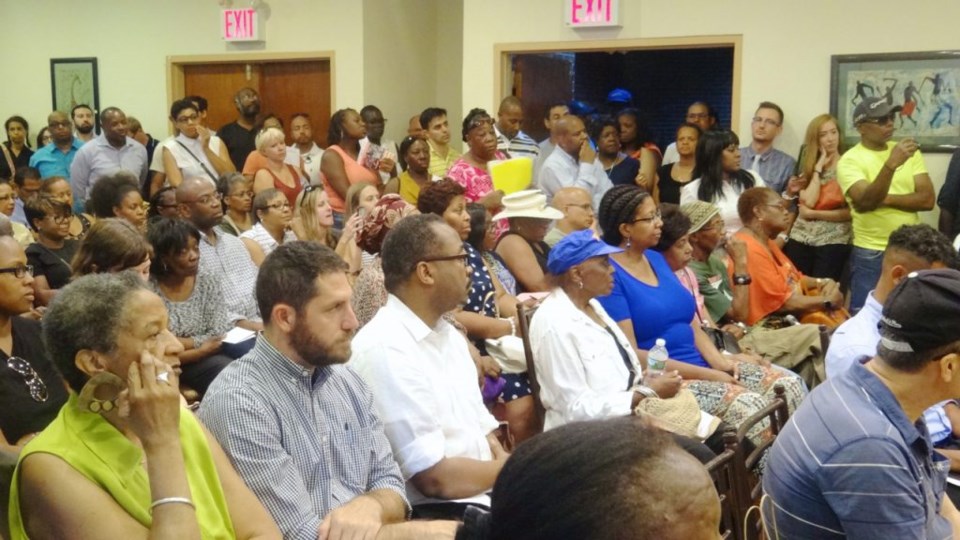
Henry Butler, Community Board 3 district manager, added, "If you drop a homeless shelter into an area where there is no problem, then guess what? You get a homeless problem!"
However, said Breaking Ground, since their 2015 survey and following the RFP announcement, they conducted a new scan of the area and observed one to two dozen homeless people.
"Bed-Stuy is supportive of the city's efforts to improve the housing disparity," said Councilmember Cornegy. "But we don't want to focus our resources on this type of housing right now. We'd like to focus our resources on affordable housing that's sustainable for the families of Bedford-Stuyvesant and Crown Heights."
"Again," said Borden, "the city is reviewing the site, and we're taking all of these issues into consideration."



